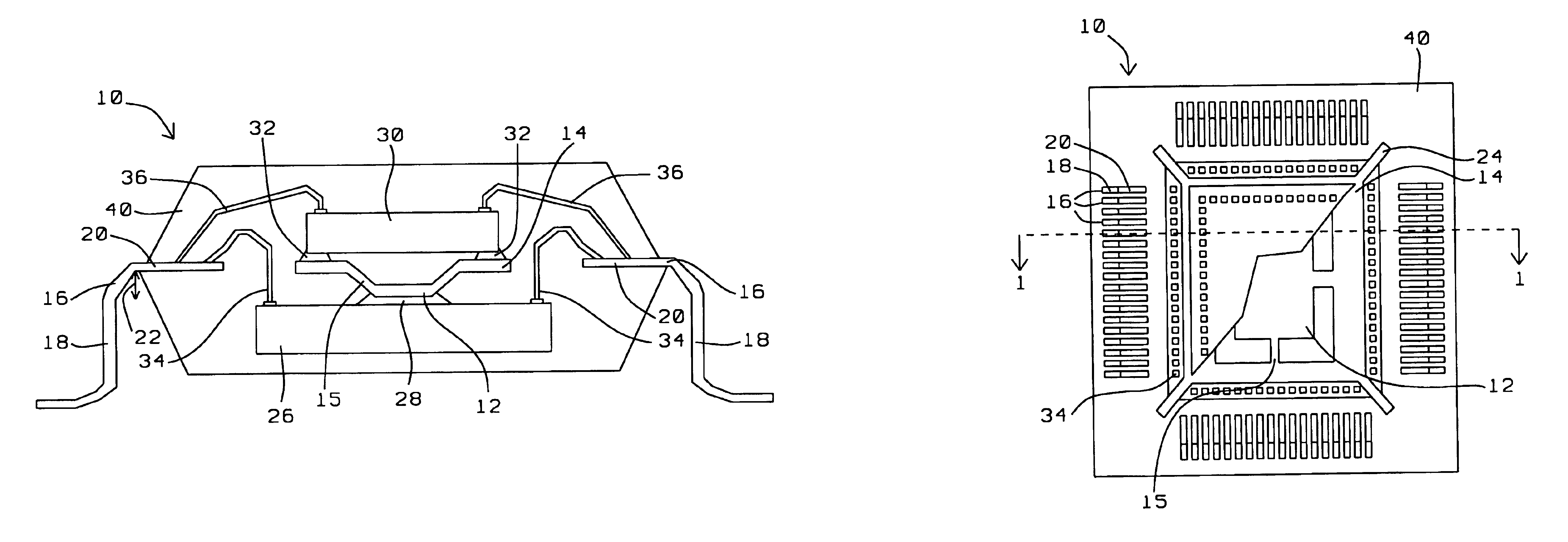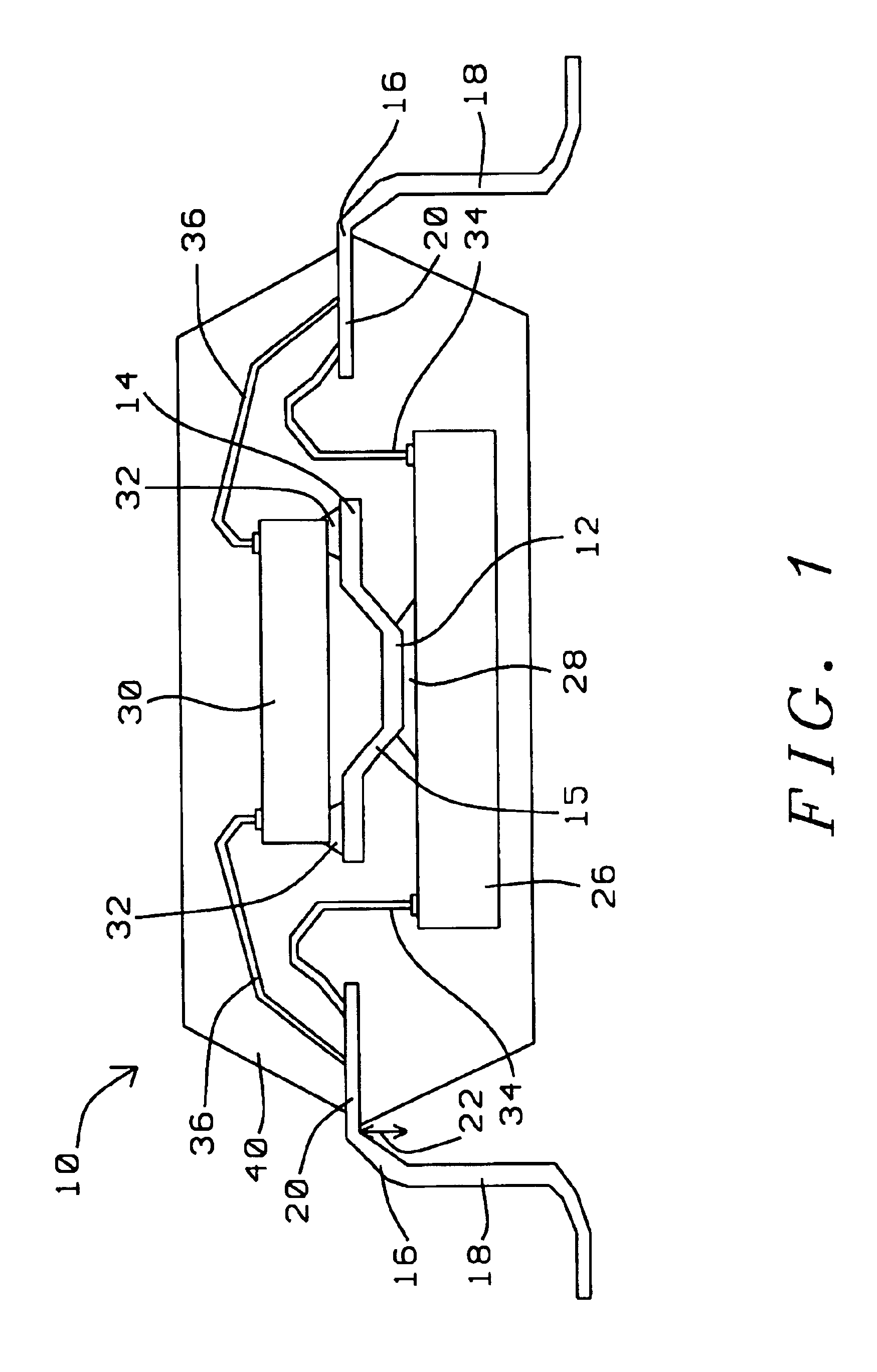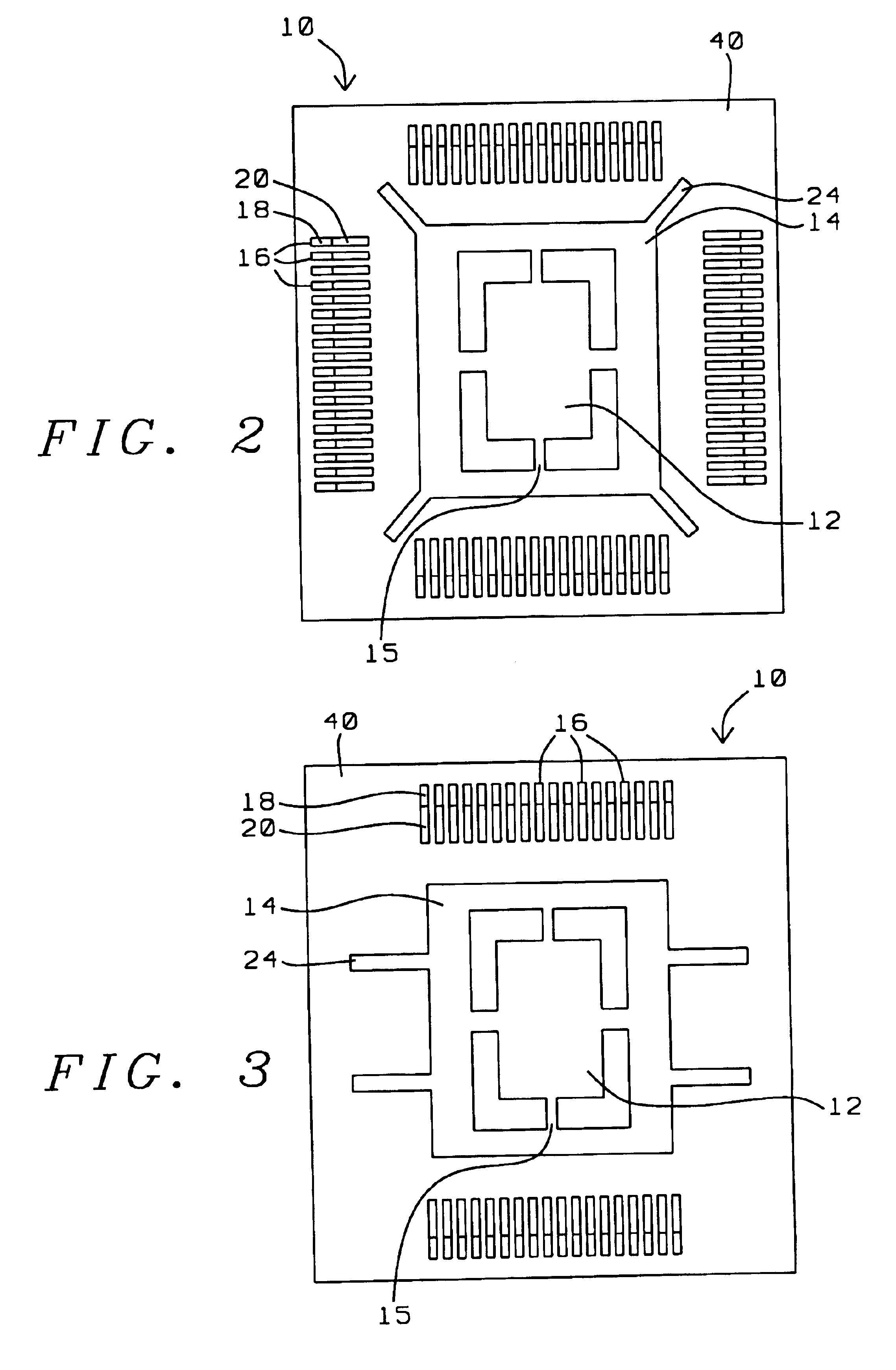Leadframe for die stacking applications and related die stacking concepts
a technology of die stacking and die splicing, applied in the direction of electrical equipment, semiconductor devices, semiconductor/solid-state device details, etc., can solve the problems of lead wire damage, lead wire bleeding, and potential for a lower, and achieve the effect of high volume and high reliability
- Summary
- Abstract
- Description
- Claims
- Application Information
AI Technical Summary
Benefits of technology
Problems solved by technology
Method used
Image
Examples
seventh embodiment
Alternatively, in the seventh embodiment, and as shown in FIGS. 12 and 13, the inventors have discovered a semiconductor package for packaging stacked dies / chips that consists of discrete outer die pads affixed to the tie bars and a center pad supported by tie bars. In this alternative, the outer ring shaped die pad is not needed.
It is noted that the inner die pad can be of any shape as long as it is within the area of die encircled by the bond pads.
First Embodiment—Single Down-Set of the Inner / Center Die Pad 12; FIGS. 1 to 4
As shown in FIGS. 1 to 4, the first embodiment of the present invention illustrates a package 10 having a leadframe design where there is a single down-set of only the inner / center die pad 12 in relation to the inner portions 20 of lead fingers 16.
Lead fingers 16 include an outer portion 18 exterior of package 10, and an inner portion 20 within package 10.
Inner / center die pad 12 is spaced downwardly (down-set) from inner portions 20 of lead fingers 16 as at 22 f...
PUM
 Login to View More
Login to View More Abstract
Description
Claims
Application Information
 Login to View More
Login to View More - R&D
- Intellectual Property
- Life Sciences
- Materials
- Tech Scout
- Unparalleled Data Quality
- Higher Quality Content
- 60% Fewer Hallucinations
Browse by: Latest US Patents, China's latest patents, Technical Efficacy Thesaurus, Application Domain, Technology Topic, Popular Technical Reports.
© 2025 PatSnap. All rights reserved.Legal|Privacy policy|Modern Slavery Act Transparency Statement|Sitemap|About US| Contact US: help@patsnap.com



